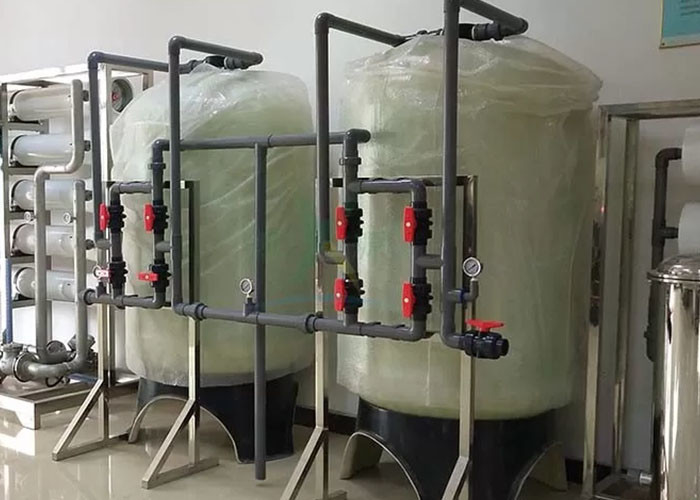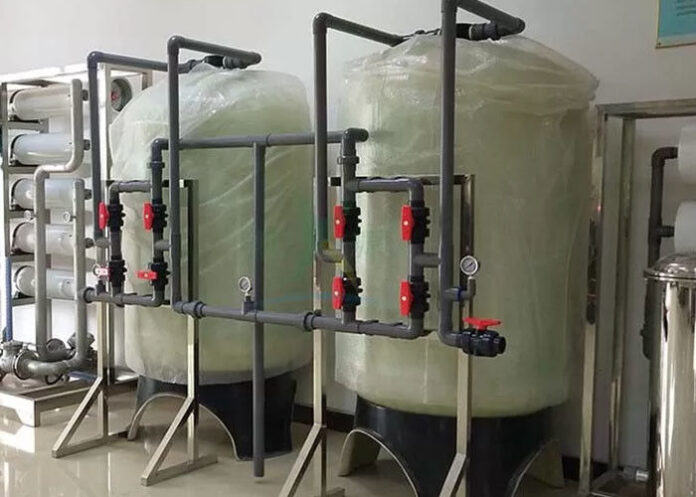[ad_1]
Having a water softener is the best thing you can have at home. This is because hard water can cause a lot of problems, ranging from soap scum, scale buildup, and dry skin. A water softener can help to remove these minerals from your water, making it softer and easier on your skin and hair.
Not only is hard water annoying to deal with on a day-to-day basis, but it can also be damaging to your home. Scale buildup can clog your plumbing and appliances, while the minerals in hard water, which are calcium and magnesium, can leave your skin and hair feeling dry and brittle.
A water softener is a perfect solution to these problems. By removing the hardness-causing minerals from your water, you can enjoy softer skin and hair and soft drinking water. Learn about water softener systems and how to choose the best water softener shower head for your home.
The Meaning of a Water Softener
A water softener is a whole house filtration system that removes hardness causing calcium and magnesium minerals from your water through ion exchange. A water softener addresses one of the most prevalent and devastating water problems: hard water.
Hard water is water that contains high levels of calcium and magnesium minerals. These minerals can wreak havoc on your home, causing everything from clogged pipes and plumbing fixtures to dry skin and hair. Scale buildup can shorten the lifespan of your appliances, including your water heater, dishwasher, and washing machine.
By installing a whole house water softener in your home, you’re treating all the water, protecting your plumbing and appliances from the damaging effects of hard water. In addition, a water softener will improve the quality of your water, making it softer and more pleasant to use. A whole house water softener is the solution to the scourge of water hardness.
How Do Water Softeners Work?
Now you know what a water softener is, let’s talk about how a water softener works. Water softeners work through a process known as ion exchange which eliminates calcium and magnesium from the water. When hard water enters the mineral tank, the calcium and magnesium ions are attracted to the resin beads. The beads can then trade their sodium ions for the hard water ions, leaving you with soft water.
The calcium and magnesium minerals have a positive charge, making them cations. As the hard water passes through the resin, the beads grab ahold of the mineral ions and remove them from the water. When the bead seizes the mineral ion, the sodium ion is released. The column of resin strips all the hardness out of the water as it passes through the mineral tank, and softened water flows out into your home.
Types of Water Softeners
Ion Exchange Water Softener
The most common type of water softener is the ion exchange unit. This type of water softener works by exchanging calcium and magnesium ions and replacing them with sodium ions. The resin beads are covered with sodium ions, and as hard water passes through the tank, the calcium and magnesium minerals are attracted to the beads.

As the minerals attach to the beads, the sodium ions are released into the water. This process continues until all of the sodium ions on the beads have been replaced by hard water minerals. At that point, the unit goes into regeneration mode. Compared to other types of water softeners, ion exchange water softeners are an economical choice, and they don’t take up much space. However, they require regular cartridge replacement according to the manufacturer’s instructions.
Salt Free Water Softener
A salt free water softener does not use sodium to exchange ions. Instead, it uses potassium chloride. Potassium chloride triggers a chemical reaction with magnesium and potassium found in hard water, which causes it to crystalize, preventing it from building up or scaling on surfaces or plumbing pipes.

Salt free water softeners are often called water conditioners because they do not remove the minerals from the water. Instead, they prevent the minerals from attaching to surfaces and causing problems. TAC systems are often combined with other filtration systems to provide the best possible water quality.
Reverse Osmosis
Reverse osmosis filters water through a semipermeable membrane that removes impurities. Reverse osmosis is a common water treatment method, but it is not as effective at removing water hardness as other methods. It’s good at removing other chemical impurities, as well as calcium and magnesium.

However, the use of reverse osmosis for drinking water can have negative effects. The human body needs minerals derived from drinking water, among other sources. Therefore, the long term use of reverse osmosis can negatively affect human health.
Components of a Water Softener
By far, the most common type of residential water softener is the ion exchange system. Understanding the function of each part will help you maintain your water softener correctly. It will also help you shop for the best water softener shower head in the market. This water softener is made of three components, including the control valve, a mineral tank, and a brine tank.
These components work in conjunction to remove hardness minerals, monitor water flow, and periodically clean the system through a regeneration process.
The Mineral Tank
The mineral tank is where the actual water softening takes place. It is filled with small plastic beads called resin. As water flows through this tank, the negatively charged resin beads attract and hold the positively charged calcium and magnesium particles in the water. The water seeps through the resin bed, depositing the water and hardening calcium and magnesium ions. The water exits the tank soft and flows through your pipes and out to your household appliances.
The Brine Tank
The brine tank is connected to the mineral tank and is where salt is added to the system. The salt creates a highly concentrated solution of salt, which is then flushed through the resin bed to remove the calcium and magnesium ions that have been deposited on it. If the brine tank runs out of salt, the water passing through the unit will no longer be softened.
The brine tank is kept filled with salt. But the problem may result if you’re on a restricted low sodium diet because a small amount of sodium is transmitted into the drinking water during the regeneration process. Sodium chloride can also affect the bacteria in septic systems that are necessary for the breakdown of waste water.
As an alternative, you can use potassium, which is considered superior and environmentally friendly, and it doesn’t affect your health, watersheds, or the function of septic systems.
The Control Valve and the Regeneration Process
The control valve measures the amount of water that passes through the softener. It also controls when regeneration or backwashing takes place. During regeneration, salt is added to the brine tank, and fresh water is flushed through the system to clean it.
The type of resin beads determines how often you’ll need to regenerate the softener. If you have a high mineral content in your water, you may need to regenerate weekly. The regeneration process consists of three cycles
Backwash Cycle
Regeneration starts with a backwash cycle in which the valve reverses the water flow in the tank and flushes the tank of debris. This debris is eliminated through the drain connected to the municipal sewer system or septic system.
Recharge Cycle
The second cycle is the recharge or brine draw. During this cycle, the salty solution is pumped from the brine tank into the mineral tank. The highly concentrated solution forces the magnesium and calcium off the beads, and the mineral rich, salty water is flushed out of the tank and down the drain.
Rinse Cycle
The final cycle is the rinse, in which fresh water enters the tank and flushes out any residual salt. The regeneration process is halted, and the water softening process repeats itself. In a freshly regenerated mineral tank, the beads are coated with sodium or potassium provided by the brine tank.
As additional hard water enters the mineral tank, the positively charged calcium and magnesium in the water are attracted to the plastic beads, replacing the sodium on the beads. When the beads become saturated with hard water calcium and magnesium, the control valve starts a new regeneration cycle and flushes the hard water minerals down the drain once more.
FAQs on a Water Softener
What is a water softener system?
A water softener is a whole house filtration system that removes calcium and magnesium from your water through an ion exchange process.
What does a water softener look like?
A water softener typically consists of three parts: a mineral tank, a brine tank, and a control valve that makes it perform its water softening process.
Final Thought on Water Softener
Water softeners are an important part of keeping your home’s plumbing system functioning correctly and promoting your health. Hard water can wreak havoc on your pipes and fixtures, causing them to become clogged and corroded over time. A water softener will help prolong the life of your plumbing system by keeping the water flowing freely through your pipes. So, investing in a water softener is a wise decision for any homeowner.
The post What is a Water Softener appeared first on Kitchen Infinity.
[ad_2]
kitcheninfinity.com










